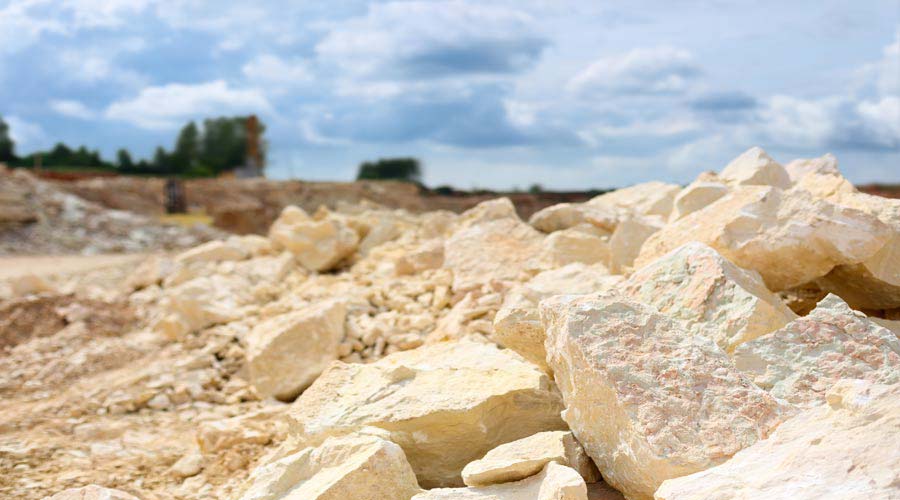A Guide to Natural Stone Selection: Limestone

When it comes to choosing natural stone for your home or commercial space, Limestone stands out as a timeless and versatile option. Loved by architects, designers, and homeowners alike, this sedimentary rock has been used for centuries in iconic structures around the world – from the Great Pyramids of Egypt to modern-day luxury villas. But how do you know if Limestone is the right choice for your project? This guide will walk you through its unique characteristics, applications, benefits, and considerations, helping you make an informed decision.
What is Limestone?
Limestone is a sedimentary rock composed primarily of calcium carbonate. It forms over millions of years from the accumulation of shells, coral, algae, and other organic marine debris. This natural process gives it a soft, earthy appeal with subtle variations in color and texture that are impossible to replicate with synthetic materials.
Depending on its formation and mineral content, Limestone can range in color from creamy whites and soft greys to warm beiges and even golden tones. Its natural beauty and understated elegance make it a popular choice for both interior and exterior applications.
Why Choose Limestone?
1. Timeless Aesthetic Appeal
Limestone offers a warm, organic look that blends beautifully with various design styles – from rustic country homes to contemporary minimalist spaces. Its subtle veining and muted tones bring a sense of calm and sophistication to any setting.
2. Versatile Applications
This stone is incredibly versatile. You can use Limestone for:
Flooring: Its natural slip resistance makes it great for indoor and outdoor floors.
Wall Cladding: Both interior feature walls and exterior facades benefit from its charm.
Countertops and Vanities: Perfect for bathrooms and kitchens with a classic appeal.
Fireplaces and Columns: Adds a touch of luxury and tradition.
Landscaping: Pavers, garden pathways, and pool surrounds look elegant in Limestone.
3. Durability with Proper Care
Although softer than granite or marble, Limestone is still highly durable when sealed and maintained properly. It ages gracefully, developing a patina over time that enhances its natural character.
Things to Consider Before Choosing Limestone
While Limestone has many advantages, understanding its properties helps ensure it suits your lifestyle and project needs:
Porosity: Limestone is a porous stone, meaning it can absorb liquids and stain if not sealed regularly. This makes it less ideal for high-traffic kitchens unless properly treated.
Softness: Compared to granite or quartzite, Limestone is softer and can scratch or chip more easily. Using cutting boards and avoiding abrasive cleaners is key.
Maintenance: Regular sealing and gentle cleaning with pH-neutral products are essential to preserving its look.
How to Select the Right Limestone
When selecting Limestone for your project, consider these factors:
Color and Finish: Decide whether you prefer honed (matte) or polished finishes. Honed Limestone is more slip-resistant, while polished surfaces bring out richer tones.
Origin and Quality: Not all Limestone is created equal. Premium varieties from regions like France, Italy, and India offer excellent durability and aesthetic consistency.
Application: Choose denser Limestone varieties for outdoor areas or high-traffic zones.
Budget: Limestone is generally more affordable than marble but prices vary based on quality, thickness, and finish.
Caring for Your Limestone
To maintain its beauty, follow these care tips:
Seal the surface at installation and reseal periodically.
Clean spills immediately to prevent staining.
Use soft cloths and pH-neutral stone cleaners.
Avoid acidic substances like lemon juice or vinegar on Limestone surfaces.
With the right care, your Limestone installations will last for decades, gaining character as they age.
Is Limestone Right for You?
If you’re seeking a natural stone with understated elegance, warm tones, and versatile applications, Limestone is an excellent choice. Its classic look never goes out of style and pairs beautifully with modern and traditional designs alike.
However, if your project involves high-traffic areas where spills and heavy wear are common, you might need to weigh Limestone’s maintenance needs against other, harder stones.
Final Thoughts
Limestone offers a perfect balance of beauty and function for those who appreciate natural materials. From luxurious interiors to serene outdoor spaces, its soft colors and textures create an inviting atmosphere. By understanding its characteristics and care requirements, you can confidently incorporate Limestone into your next design project and enjoy its timeless appeal for years to come.

